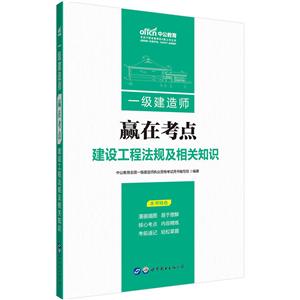应用线性统计模型-下册-(英文影印版.原书第5版)

|
应用线性统计模型-下册-(英文影印版.原书第5版)作者:库特纳 开 本:16开 书号ISBN:9787111526049 定价: 出版时间:2016-04-01 出版社:机械工业出版社 |
应用线性统计模型-下册-(英文影印版.原书第5版) 本书特色
本书接续上册,分为三部分:第4部分单因子研究的分析和设计,内容涉及试验和观测研究的设计引入,单因子研究,因子水平平均数分析,anova诊断和修正测度,;第5部分多因子研究,内容涉及具有相等样本量的双因子研究,双因子研究:次处理一个,随机完全区组设计,协方差分析,具有不相等样本量的双因子研究,多因子研究,随机和混合效应模型;第6部分专业化的设计,内容涉及嵌套设计、二次抽样和偏套设计,重复和相关设计,平衡不完全区组、拉丁方和相关设计,探索性试验:二阶析因设计和分式析因设计,响应面方法论。本书篇幅适中,例子涉及各个应用领域,在介绍统计思想方面比较突出,数据丰富。 本书适用于高等院校统计学专业和理工科各专业本科生和研究生作为教材使用。
应用线性统计模型-下册-(英文影印版.原书第5版) 内容简介
本书是在美国大学中广泛使用的教材,已经再版至第5版,不仅深受广大师生的欢迎,而且有很大的影响,已逐步成为经典。 由于篇幅较大,股起英文影印版分为上、下两册。本书深入地介绍了“应用线性统计模型”这门课程中几乎所有的关键知识,但是读起来并不艰深晦涩。书中用深入浅出的方式来讲解相关概念,同时配有大量的例题、习题以及实际案例帮助学生理解知识点。同时在帮助学生独立地解决实际问题方面,本书给人留下很深刻的印象。 本书图文并茂,许多例子和习题都是经过精心挑选的,来源于生活和工程实践,丰富的数据也都取材于实际案例。因此,本书不仅适用于统计专业,也可作为商业、计量经济学等专业的参考书。 本书叙述比较详尽,内容比国内教材丰富,篇幅较大,因此作为教材时刻适当选取主要内容讲授,其余可作为学生自学使用。
应用线性统计模型-下册-(英文影印版.原书第5版) 目录
contentspreface part fourdesign and analysis ofsingle-factor studies 641chapter 15introduction to the design ofexperimental and observationalstudies 64215.1 experimental studies, observationalstudies, and causation 643experimental studies 643observational studies 644mixed experimental and observationalstudies 64615.2 experimental studies: basicconcepts 647xx contentsfactors 647crossed and nested factors 648treatments 649choice of treatments 649experimental units 652sample size and replication 652randomization 653constrained randomization:blocking 655measurements 65815.3 an overview of standard experimentaldesigns 658completely randomized design 659factorial experiments 660randomized complete blockdesigns 661nested designs 662repeated measures designs 663incomplete block designs 664two-level factorial and fractionalfactorial experiments 665response surface experiments 66615.4 design of observational studies 666cross-sectional studies 666prospective studies 667retrospective studies 667matching 66815.5 case study: paired-comparisonexperiment 66915.6 concluding remarks 672cited references 672problems 672exercise 676chapter 16single-factor studies 67716.1 single-factor experimental andobservational studies 67716.2 relation between regression andanalysis of variance 679illustrations 679choice between two types of models 68016.3 single-factor anova model 681basic ideas 681cell means model 681important features of model 682the anova model is a linearmodel 683interpretation of factor level means 684distinction between anova models iand ii 68516.4 fitting of anova model 685notation 686least squares and maximum likelihoodestimators 687residuals 68916.5 analysis of variance 690partitioning of ssto 690breakdown of degrees of freedom 693mean squares 693analysis of variance table 694expected mean squares 69416.6 f test for equality of factor levelmeans 698test statistic 698distribution of f* 699construction of decision rule 69916.7 alternative formulation of model 701factor effects model 701definition of µ. 702test for equality of factor levelmeans 70416.8 regression approach to single-factoranalysis of variance 704factor effects model with unweightedmean 705factor effects model with weightedmean 709cell means model 71016.9 randomization tests 71216.10 planning of sample sizes with powerapproach 716power of f test 716use of table b.12 for single-factorstudies 718some further observations on useof table b.12 72016.11 planning of sample sizes to find “best”treatment 721cited reference 722contents xxiproblems 722exercises 730projects 730case studies 732chapter 17analysis of factor level means 73317.1 introduction 73317.2 plots of estimated factor levelmeans 735line plot 735bar graph and main effects plot 73617.3 estimation and testing of factor levelmeans 737inferences for single factor levelmean 737inferences for difference between twofactor level means 739inferences for contrast of factor levelmeans 741inferences for linear combination offactor level means 74317.4 need for simultaneous inferenceprocedures 74417.5 tukey multiple comparisonprocedure 746studentized range distribution 746simultaneous estimation 747simultaneous testing 747example 1—equal sample sizes 748example 2—unequal sample sizes 75017.6 scheff´e multiple comparisonprocedure 753simultaneous estimation 753simultaneous testing 754comparison of scheff ´ e and tukeyprocedures 75517.7 bonferroni multiple comparisonprocedure 756simultaneous estimation 756simultaneous testing 756comparison of bonferroni procedure withscheff´eand tukey procedures 757analysis of means 75817.8 planning of sample sizes with estimationapproach 759example 1—equal sample sizes 759example 2—unequal sample sizes 76117.9 analysis of factor effects when factoris quantitative 762cited references 766problems 767exercises 773projects 774case studies 774chapter 18anova diagnostics and remedialmeasures 77518.1 residual analysis 775residuals 776residual plots 776diagnosis of departures from anovamodel 77818.2 tests for constancy of errorvariance 781hartley test 782brown-forsythe test 78418.3 overview of remedial measures 78618.4 weighted least squares 78618.5 transformations of responsevariable 789simple guides to finding atransformation 789box-cox procedure 79118.6 effects of departures from model 793nonnormality 793unequal error variances 794nonindependence of error terms 79418.7 nonparametric rank f test 795test procedure 795multiple pairwise testingprocedure 79718.8 case example—heart transplant 798cited references 801problems 801exercises 807projects 807case studies 809xxii contentspart fivemulti-factor studies 811chapter 19two-factor studies with equalsample sizes 81219.1 two-factor observational andexperimental studies 812examples of two-factor experiments andobservational studies 812the one-factor-at-a-time (ofaat)approach to experimentation 815advantages of crossed, multi-factordesigns 81619.2 meaning of anova modelelements 817illustration 817treatment means 817factor level means 818main effects 818additive factor effects 819interacting factor effects 822important and unimportantinteractions 824transformable and nontransformableinteractions 826interpretation of interactions 82719.3 model i (fixed factor levels) fortwo-factor studies 829cell means model 830factor effects model 83119.4 analysis of variance 833illustration 833notation 834fitting of anova model 834partitioning of total sumof squares 836partitioning of degrees of freedom 839mean squares 839expected mean squares 840analysis of variance table 84019.5 evaluation of appropriateness ofanova model 84219.6 f tests 843test for interactions 844test for factor a main effects 844test for factor b main effects 845kimball inequality 84619.7 strategy for analysis 84719.8 analysis of factor effects when factorsdo not interact 848estimation of factor level mean 848estimation of contrast of factor levelmeans 849estimation of linear combination offactor level means 850multiple pairwise comparisons of factorlevel means 850multiple contrasts of factor levelmeans 852estimates based on treatmentmeans 853example 1—pairwise comparisonsof factor level means 853example 2—estimation of treatmentmeans 85519.9 analysis of factor effects wheninteractions are important 856multiple pairwise comparisonsof treatment means 856multiple contrasts of treatmentmeans 857example 1—pairwise comparisonsof treatment means 857example 2—contrasts of treatmentmeans 86019.10 pooling sums of squares in two-factoranalysis of variance 86119.11 planning of sample sizes for two-factorstudies 862power approach 862estimation approach 863finding the “best” treatment864problems 864exercises 876projects 876case studies 879contents xxiiichapter 20two-factor studies—one caseper treatment 88020.1 no-interaction model 880model 881analysis of variance 881inference procedures 881estimation of treatment mean 88420.2 tukey test for additivity 886development of test statistic 886remedial actions if interaction effectsare present 888cited reference 889problems 889exercises 891case study 891chapter 21randomized complete blockdesigns 89221.1 elements of randomized complete blockdesigns 892description of designs 892criteria for blocking 893advantages and disadvantages 894how to randomize 895illustration 89521.2 model for randomized complete blockdesigns 89721.3 analysis of variance and tests 898fitting of randomized completeblock model 898analysis of variance 89821.4 evaluation of appropriatenessof randomized complete blockmodel 901diagnostic plots 901tukey test for additivity 90321.5 analysis of treatment effects 90421.6 use of more than one blockingvariable 90521.7 use of more than one replicate in eachblock 90621.8 factorial treatments 90821.9 planning randomized complete blockexperiments 909power approach 909estimation approach 910efficiency of blocking variable 911problems 912exercises 916chapter 22analysis of covariance 91722.1 basic ideas 917how covariance analysis reduces errorvariability 917concomitant variables 91922.2 single-factor covariance model 920notation 921development of covariance model 921properties of covariance model 922generalizations of covariancemodel 923regression formula of covariancemodel 924appropriateness of covariancemodel 925inferences of interest 92522.3 example of single-factor covarianceanalysis 926development of model 926test for treatment effects 928estimation of treatment effects 930test for parallel slopes 93222.4 two-factor covariance analysis 933covariance model for two-factorstudies 933regression approach 934covariance analysis for randomizedcomplete block designs 93722.5 additional considerations for the useof covariance analysis 939covariance analysis as alternativeto blocking 939use of differences 939correction for bias 940xxiv contentsinterest in nature of treatmenteffects 940problems 941exercise 947projects 947case studies 950chapter 23two-factor studies with unequalsample sizes 95123.1 unequal sample sizes 951notation 95223.2 use of regression approach for testingfactor effects when sample sizes areunequal 953regression approach to two-factoranalysis of variance 95323.3 inferences about factor effects whensample sizes are unequal 959example 1—pairwise comparisonsof factor level means 962example 2—single-degree-of-freedomtest 96423.4 empty cells in two-factor studies 964partial analysis of factor effects 965analysis if model with no interactions canbe employed 966missing observations in randomizedcomplete block designs 96723.5 anova inferences when treatmentmeans are of unequal importance 970estimation of treatment means and factoreffects 971test for interactions 972tests for factor main effects by useof equivalent regression models 972tests for factor main effects by useof matrix formulation 975tests for factor effects when weights areproportional to sample sizes 97723.6 statistical computing packages 980problems 981exercises 988projects 988case studies 990chapter 24multi-factor studies 99224.1 anova model for three-factorstudies 992notation 992illustration 993main effects 993two-factor interactions 995three-factor interactions 996cell means model 996factor effects model 99724.2 interpretation of interactionsin three-factor studies 998learning time example 1: interpretationof three-factor interactions 998learning time example 2: interpretationof multiple two-factor interactions 999learning time example 3: interpretationof a single two-factor interaction 100024.3 fitting of anova model 1003notation 1003fitting of anova model 1003evaluation of appropriateness of anovamodel 100524.4 analysis of variance 1008partitioning of total sum of squares 1008degrees of freedom and meansquares 1009tests for factor effects 100924.5 analysis of factor effects 1013strategy for analysis 1013analysis of factor effects when factors donot interact 1014analysis of factor effects with multipletwo-factor interactions or three-factorinteraction 1016analysis of factor effects with singletwo-factor interaction 1016example—estimation of contrastsof treatment means 101824.6 unequal sample sizes in multi-factorstudies 1019tests for factor effects 1019inferences for contrasts of factor levelmeans 1020contents xxv24.7 planning of sample sizes 1021power of f test for multi-factorstudies 1021use of table b.12 for multi-factorstudies 1021cited reference 1022problems 1022exercises 1027projects 1027case studies 1028chapter 25random and mixed effects models 103025.1 single-factor studies—anovamodel ii 1031random cell means model 1031questions of interest 1034test whether •2µ = 0 1035estimation of µ• 1038estimation of •2µ/_•2µ •2_ 1040estimation of •2 1041point estimation of •2µ 1042interval estimation of •2µ 1042random factor effects model 104725.2 two-factor studies—anova models iiand iii 1047anova model ii—random factoreffects 1047anova model iii—mixed factoreffects 104925.3 two-factor studies—anova tests formodels ii and iii 1052expected mean squares 1052construction of test statistics 105325.4 two-factor studies—estimationof factor effects for models iiand iii 1055estimation of variance components 1055estimation of fixed effects in mixedmodel 105625.5 randomized complete block design:random block effects 1060additive model 1061interaction model 106425.6 three-factor studies—anovamodels ii and iii 1066anova model ii—random factoreffects 1066anova model iii—mixed factoreffects 1066appropriate test statistics 1067estimation of effects 106925.7 anova models ii and iii with unequalsample sizes 1070maximum likelihood approach 1072cited references 1077problems 1077exercises 1085projects 1085part sixspecialized studydesigns 1087chapter 26nested designs, subsampling, andpartially nested designs 108826.1 distinction between nested and crossedfactors 108826.2 two-factor nested designs 1091development of model elements 1091nested design model 1092random factor effects 109326.3 analysis of variance for two-factornested designs 1093fitting of model 1093sums of squares 1094degrees of freedom 1095tests for factor effects 1097random factor effects 109926.4 evaluation of appropriateness of nesteddesign model 109926.5 analysis of factor effects in two-factornested designs 1100estimation of factor level meansµi . 1100estimation of treatment means µi j 1102estimation of overall mean µ.. 1103estimation of variance components 1103xxvi contents26.6 unbalanced nested two-factordesigns 110426.7 subsampling in single-factor study withcompletely randomized design 1106model 1107analysis of variance and tests ofeffects 1108estimation of treatment effects 1110estimation of variances 111126.8 pure subsampling in three stages 1113model 1113analysis of variance 1113estimation of µ.. 111326.9 three-factor partially nesteddesigns 1114development of model 1114analysis of variance 1115cited reference 1119problems 1119exercises 1125projects 1125chapter 27repeated measures and relateddesigns 112727.1 elements of repeated measuresdesigns 1127description of designs 1127advantages and disadvantages 1128how to randomize 112827.2 single-factor experiments with repeatedmeasures on all treatments 1129model 1129analysis of variance and tests 1130evaluation of appropriateness of repeatedmeasures model 1134analysis of treatment effects 1137ranked data 1138multiple pairwise testingprocedure 113827.3 two-factor experiments with repeatedmeasures on one factor 1140description of design 1140model 1141analysis of variance and tests 1142evaluation of appropriateness of repeatedmeasures model 1144analysis of factor effects: withoutinteraction 1145analysis of factor effects: withinteraction 1148blocking of subjects in repeated measuresdesigns 115327.4 two-factor experiments with repeatedmeasures on both factors 1153model 1154analysis of variance and tests 1155evaluation of appropriateness of repeatedmeasures model 1157analysis of factor effects 115727.5 regression approach to repeatedmeasures designs 116127.6 split-plot designs 1162cited references 1164problems 1164exercise 1171projects 1171chapter 28balanced incomplete block, latin square,and related designs 117328.1 balanced incomplete blockdesigns 1173advantages and disadvantagesof bibds 117528.2 analysis of balanced incomplete blockdesigns 1177bibd model 1177regression approach to analysis ofbalanced incomplete block designs 1177analysis of treatment effects 1180planning of sample sizes with estimationapproach 118228.3 latin square designs 1183basic ideas 1183description of latin squaredesigns 1184advantages and disadvantages of latinsquare designs 1185contents xxviirandomization of latin squaredesign 118528.4 latin square model 118728.5 analysis of latin squareexperiments 1188notation 1188fitting of model 1188analysis of variance 1188test for treatment effects 1190analysis of treatment effects 1190residual analysis 1191factorial treatments 1192random blocking variable effects 1193missing observations 119328.6 planning latin squareexperiments 1193power of f test 1193necessary number of replications 1193efficiency of blocking variables 119328.7 additional replications with latinsquare designs 1195replications within cells 1195additional latin squares 119628.8 replications in repeated measuresstudies 1198latin square crossover designs 1198use of independent latin squares 1200carryover effects 1201cited references 1202problems 1202chapter 29exploratory experiments: two-levelfactorial and fractional factorialdesigns 120929.1 two-level full factorialexperiments 1210design of two-level studies 1210notation 1210estimation of factor effects 1212inferences about factor effects 121429.2 analysis of unreplicated two-levelstudies 1216pooling of interactions 1218pareto plot 1219dot plot 1220normal probability plot 1221center point replications 122229.3 two-level fractional factorialdesigns 1223confounding 1224defining relation 1227half-fraction designs 1228quarter-fraction and smaller-fractiondesigns 1229resolution 1231selecting a fraction of highestresolution 123229.4 screening experiments 12392k- fiii fractional factorial designs 1239plackett-burman designs 124029.5 incomplete block designs for two-levelfactorial experiments 1240assignment of treatments to blocks 1241use of center point replications 124329.6 robust product and processdesign 1244location and dispersion modeling 1246incorporating noise factors 1250case study—clutch slave cylinderexperiment 1252cited references 1256problems 1256exercises 1266chapter 30response surface methodology 126730.1 response surface experiments 126730.2 central composite response surfacedesigns 1268structure of central compositedesigns 1268commonly used central compositedesigns 1270rotatable central compositedesigns 1271other criteria for choosing a centralcomposite design 1273blocking central compositedesigns 1275xxviii contentsadditional general-purpose responsesurface designs 127630.3 optimal response surfacedesigns 1276purpose of optimal designs 1276optimal design approach 1278design criteria for optimal designselection 1279construction of optimal response surfacedesigns 1282some final cautions 128330.4 analysis of response surfaceexperiments 1284model interpretation andvisualization 1284response surface optimumconditions 128630.5 sequential search for optimumconditions—method of steepestascent 1290cited references 1292problems 1292projects 1295appendix asome basic results in probabilityand statistics 1297appendix btables 1315appendix cdata sets 1348appendix drules for developing anova models andtables for balanced designs 1358appendix eselected bibliography 1374index 1385
教材 研究生/本科/专科教材
在线阅读
- 最新内容
- 相关内容
- 网友推荐
- 图文推荐
| [高考] 2022 西安电子科技大学《软件工程》大作业答案 (2022-04-25) |
| [家长教育] 孩子为什么会和父母感情疏离? (2019-07-14) |
| [教师分享] 给远方姐姐的一封信 (2018-11-07) |
| [教师分享] 伸缩门 (2018-11-07) |
| [教师分享] 回家乡 (2018-11-07) |
| [教师分享] 是风味也是人间 (2018-11-07) |
| [教师分享] 一句格言的启示 (2018-11-07) |
| [教师分享] 无规矩不成方圆 (2018-11-07) |
| [教师分享] 第十届全国教育名家论坛有感(二) (2018-11-07) |
| [教师分享] 贪玩的小狗 (2018-11-07) |






